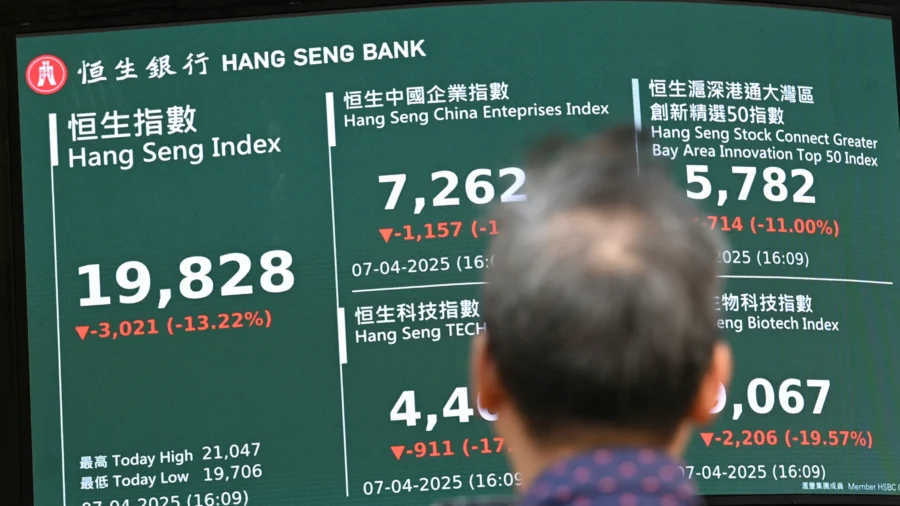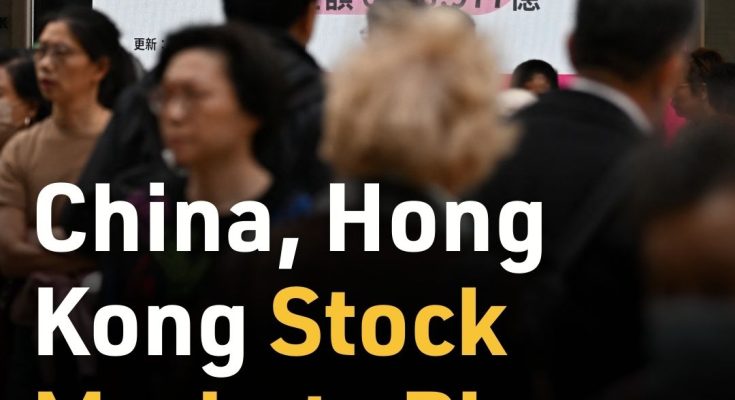Hong Kong and mainland China’s stock markets plummeted on April 7, after Beijing’s announcement of retaliatory tariffs in response to recent U.S. tariff hikes.
The Hang Seng Index (HSI) in Hong Kong fell by 13.2 percent, marking its steepest single-day decline since the 1997 Asian financial crisis. The drop erased nearly all gains made since the start of the year and pushed the benchmark into bear market territory, defined by a fall of 20 percent or more from a recent peak.
Estimated investor losses in Hong Kong alone totaled US$80 billion as the HSI nosedived.
Tech and hardware stocks bore the brunt of the sell-off. Lenovo Group plunged 23 percent, reflecting mounting concerns over supply chain disruptions. Sunny Optical, a major Apple supplier, also saw heavy losses. Among tech giants, Alibaba fell approximately 18 percent, and Tencent slid 12 percent, as widespread sell-offs hit the sector.
On China’s mainland, the CSI 300 Index—which tracks major firms listed in Shanghai and Shenzhen—fell 7 percent, despite intervention from state-backed funds known as the “national team”. The Shanghai Composite dropped 7.34 percent, while the Shenzhen Component Index slumped 9.66 percent, as anxiety over trade and economic slowdown spread.

The shockwaves extended across the Asia-Pacific region: all 14 major indices in the region fell on Monday, with 11 of them hitting 52-week lows. Japan’s Nikkei 225 dropped 7.8 percent, South Korea’s KOSPI lost 5.6 percent, and Singapore’s STI fell 8 percent.
On April 4, China announced a 34 percent retaliatory tariff on U.S. goods, effective April 10, 2025.
In response, President Donald Trump threatened to raise tariffs further, warning that if China did not withdraw its new tariffs by April 8, the United States would impose an additional 50 percent tariff on Chinese imports starting April 9. He also declared that all discussions with Chinese officials would be suspended, with negotiations shifting toward other trading partners.
Previously, on Feb. 1, the Trump administration imposed a 10 percent tariff on all Chinese imports. This was raised to 20 percent in March, and on April 2, Trump announced an additional 34 percent increase, bringing the total tariff burden to 54 percent, set to take effect on April 9.



